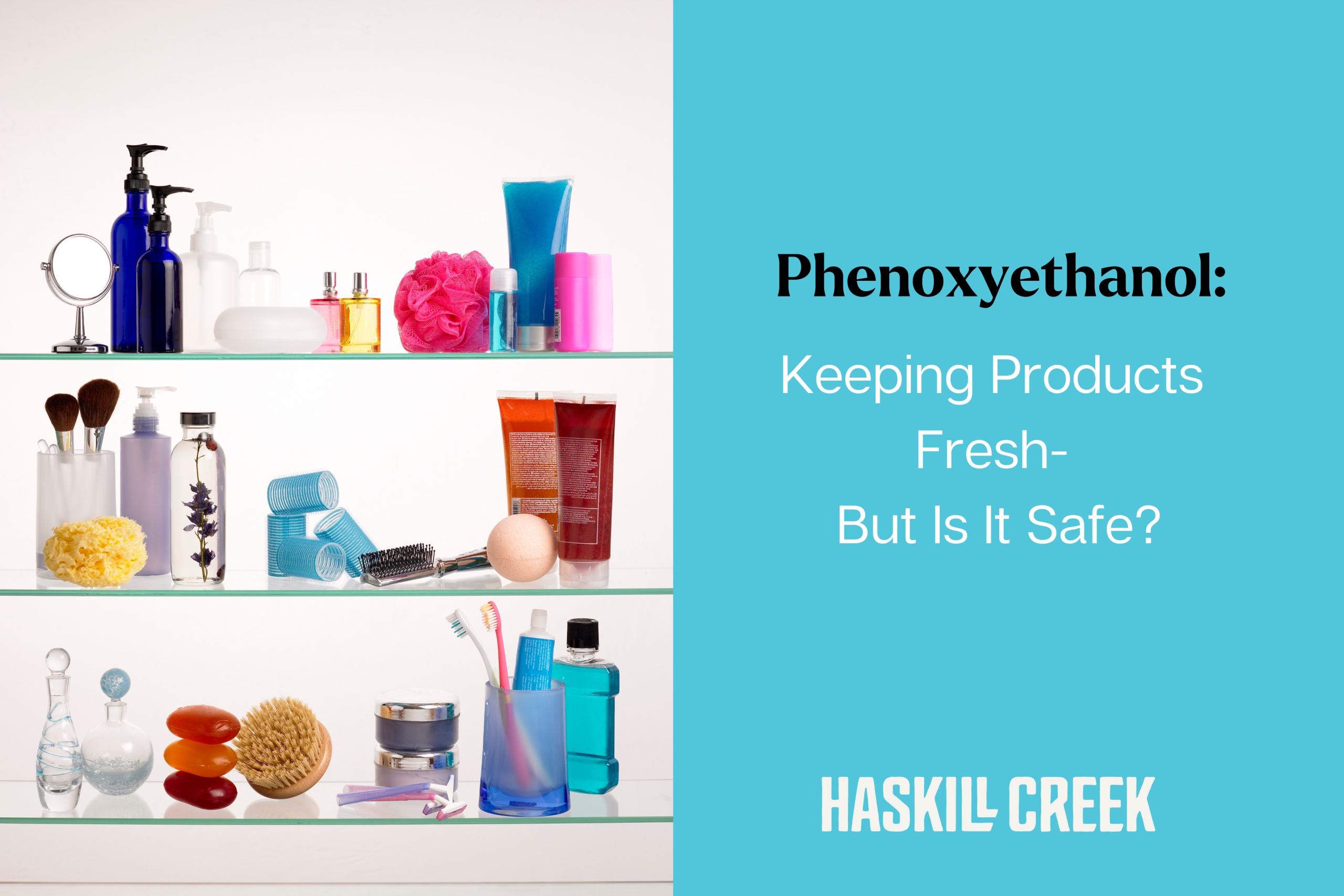Your Bag


Curious about what’s in your everyday products? Decoding labels isn’t always easy, so we’re breaking it down—spotlighting ingredients, what they do, and whether they’re friend or foe. I’ll be your guide, with research-backed insights from the Haskill Creek team. Got an ingredient you’re wondering about? Email us at Hello@haskillcreek, and I’ll dig into it!
Phenoxyethanol is a synthetic preservative that prevents the growth of bacteria, yeast, and mold in personal care products. It’s valued for its stability and mild scent, making it popular in everything from skincare to makeup (🔗).
Preservative Power – Prevents contamination and increases product shelf life.
Gentle Scent – Has a mild rose-like fragrance.
Non-Irritating in Low Doses – Well-tolerated at low concentrations.
Phenoxyethanol is considered safe when used at low levels (typically below 1%), which aligns with guidelines from the European Union and other regulatory bodies. However, higher concentrations or certain product types may lead to issues—especially in infants and sensitive skin types.
For Adults:
Concentrations Above 1% – May cause skin irritation, allergic reactions (like eczema or hives), and redness—particularly in those with sensitive skin.
Combined with Other Preservatives – Mixed with other preservatives like parabens can increase the likelihood of allergic reactions and sensitivity.
For Infants:
FDA Warning for Nipple Creams – It may depress the central nervous system in breastfeeding infants, leading to vomiting, diarrhea, and drowsiness(🔗).
Increased Absorption Risk – Infants have thinner skin, which increases absorption and sensitivity to ingredients that are otherwise well-tolerated in adults.
Any Level Can Be Concerning – Even trace amounts of phenoxyethanol can pose a risk for infants, especially in leave-on products or if ingested.
Low on the Ingredient List – If phenoxyethanol appears near the bottom, it’s likely under 1%.
Certified Safe – EWG Verified (rating of 1–2) or backed by clean beauty standards like Credo Clean Standard and Made Safe.
No Warnings – Products with low levels typically don’t carry warnings like "avoid contact with eyes" or "not for use on infants."
In Rinse-Off Products – Less concerning in cleansers or wash-off products than in leave-on products (like lotions).
High on the Ingredient List – If it’s listed within the first 5–7 ingredients, the concentration may be too high.
Not Certified – Lack of EWG verification or other clean certification could mean higher levels.
Paired with Other Preservatives – Combined with parabens or formaldehyde releasers (like DMDM Hydantoin), it could increase irritation risk.
In Baby or Sensitive Skin Products Without Clarification – Since phenoxyethanol can irritate delicate skin, it’s often avoided in these products.
We recognize that phenoxyethanol serves a useful role in preserving product integrity, but we prioritize transparency and safety. We aim to avoid it when possible (all baby related products are free), unless it’s present at safe levels and/or in products with trusted certifications like EWG Verified. If you want to know which of our products contain phenoxyethanol, just ask—we’re happy to share.

Join to get the Haskill Newsletter and be the first to learn about new products, events, and other goings-on at Haskill Creek!
